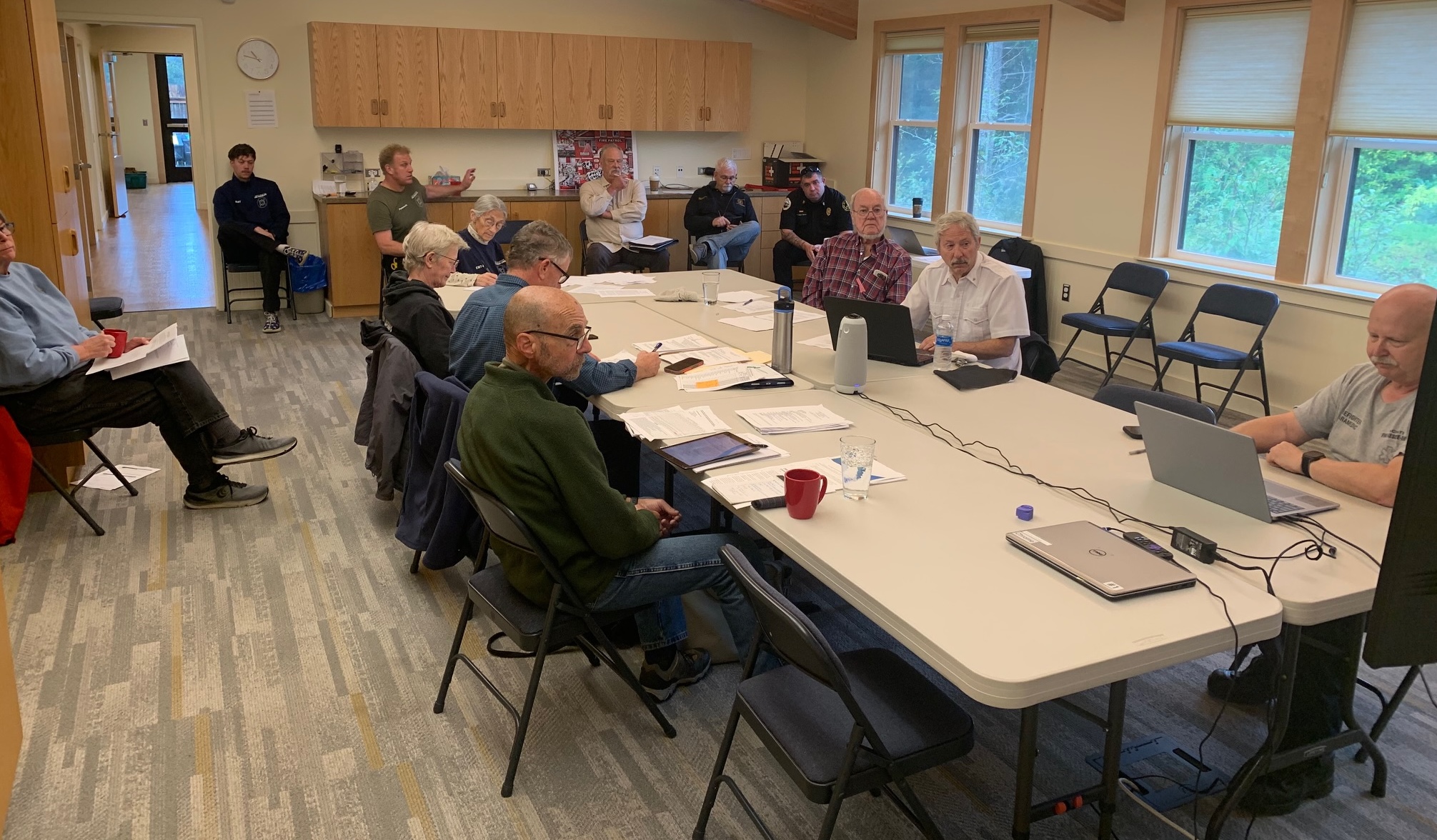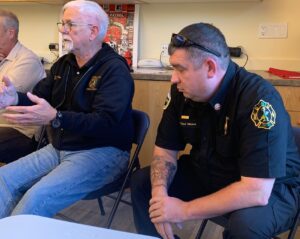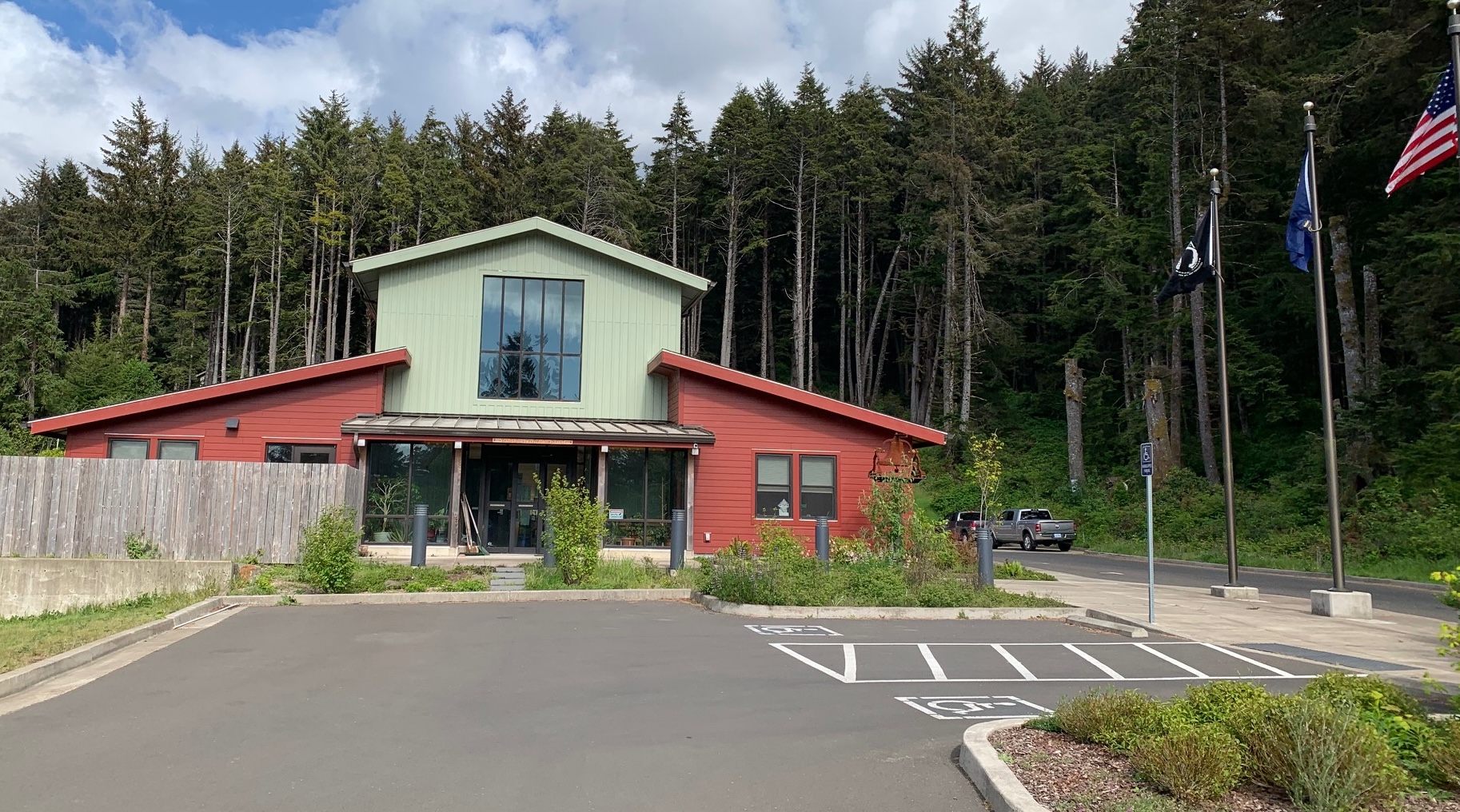
By GARRET JAROS / Lincoln Chronicle
YACHATS – The devil will be in the details but talks are underway whether fire districts in Yachats and Waldport should unite or continue as interdependent but separate entities.
If the boards of the Yachats Rural Fire Protection and Central Oregon Coast Fire & Rescue districts agree that a merger or consolidation is in the best interest of public safety and taxpayers it would then be up to voters to decide in 2027.
Two board members from each district have met once to discuss the possibilities after Central Coast’s board reached out to Yachats’ board with the proposal in July.
Yachats’ board received a progress report at its monthly meeting Monday from vice president Drew Tracy and member Stan Wagaman, who had met with COCF&R’s president Jon MacCulloch and member Judy Thimakis. They will meet again at the end of the month.
MacCulloch and Central Coast fire chief Jamie Mason also attended Yachats’ meeting to help answer any questions and give additional information.
Tracy began by saying MacCulloch had given he and Wagaman an overview of the current situation, which is “… small agencies throughout the coast duplicating services and equipment,” along with the benefits of the districts coming together. They also learned more about how the tax base for the districts work, Tracy said, and how those would be affected in a merger or consolidation.
Until recent passage of levies, both districts had struggled financially for years. Each has a chief or administrator and office staff overseeing a department of six full-time firefighters who regularly respond to each others’ emergency calls and frequently train together.
Tracy, a former East Coast police chief, said that after moving to Yachats he realized there were not many first responders and that fire districts do not have the resources they need.
“And we’ve got to work together,” he said. “And the way I see it, this is my personal opinion just from a short meeting … but I’m for looking at something like that in the near future. … I think this is something we have to really tackle and move forward.”

MacCulloch then clarified how a new permanent tax base rate would be calculated if the districts were to merge. In short, whether the districts chose to consolidate or merge, a new rate would be based on their combined assessed property value.
Mason added there is a lot of math involved but that after talking with the Oregon Department of Revenue determined if the districts merged, the new permanent tax rate for the combined department would reset to 51 cents per $1,000 assessed property value.
Yachats currently has a permanent tax rate of 29 cents while Central Coast’s is 82 cents, meaning Yachats district residents would pay more and Central’s less.
In Oregon, the permanent tax base for fire districts was established by Measure 50 in 1997. It gave all taxing districts a permanent operating tax rate limit that cannot be increased. But the districts can – and have – seek voter approval of operating levies.
Tax levies for both districts would also be affected and dependent upon whether the districts merged or consolidated, Mason explained.
“A consolidation means everybody’s levies go away and we have to add a second part of the ballot (to form a new district) to establish new levies to either make the same amount of the money at the end of the day or increase what we think the districts need as an entire entity,” Mason said. “In a merger, whatever district you’re merging into, their levies stay intact.”

Current tax rates
As of the 2025-26 fiscal year, Yachats Fire has three property tax levies in effect for operations and capital costs. For a property with an assessed value of $250,000, the combined levies amount to approximately $622 per year. In addition to its permanent tax base, Yachats Fire has a local option tax of $1.59 that expires in 2027 and a 61 cent levy that expires in 2028.
The district also has a voter-approved 30-year bond for up to $7.7 million to build the new fire station. The bond is being paid for through property taxes, with a 2018 tax rate of 70 cents per $1,000 assessed value.
Central Coast had a five-year, $1.87 per $1,000 assessed property value levy approved by voters in May to pay for operations, staffing, and equipment. This levy replaced a $1.27 levy. It also has a separate equipment levy at 25 cents per $1,000 of assessed value and a permanent tax base of 82 cents.
The district also owes the city of Waldport $1.02 million for the fire station in downtown that it purchased in 2022. The district is seeking a grant from the Oregon Legislature to cover the debt and pay for renovations.
In Oregon, the responsibility for a fire district’s debt after a merger or consolidation is determined by a debt distribution plan. Without such a plan, the newly formed or “surviving” district becomes liable for all the obligations of the merging districts.
Options
With the consolidation option, a new district would have to seek new tax levies to get back to par. Taxpayers would see one line for taxes instead of multiple items, Mason told the Yachats board, but it would also be a higher number for Yachats fire district taxpayers to account for the permanent rate increase, which could make voters balk.
“So that perception is going to be your biggest hurdle,” Mason said.
In a merger the levies would stay for one district, but voters would still need to approve them at the ballot box.
“So those are going to be the fiscal challenges when you’re trying to convince the public that this is going to be a good thing and it will save money — but here’s how we keep our finances where we need ‘em until we can find out how these cost-saving things go forward,” Mason said. “And then eventually eliminate down to one levy down the road.”
Yachats Fire board member Ed Hallahan asked Mason what had changed since 2012 when a countywide fire consolidation feasibility study found that merging different districts in different combinations did not make sense.
Mason said the biggest reason nothing came of it was because districts did not want to give up their territory.
“But when the study was done, the request was to show us how it’s going to improve things … and the numbers didn’t pan out,” Hallahan said.
Mason said the demographics have changed in the last 13 years and the number of fire volunteers have declined.
“Today we’re all running on what little bit we have and then trying to combine it all together to make it work,” Mason said. “If you tell me there’s one agency in this county that can run a structure fire completely by themselves – it doesn’t happen. If it’s a commercial structure fire, then we’re pulling major resources like ladder trucks out of areas where those ladder trucks are supposed to be because we don’t have them in most the areas because we can’t afford them.”
Yachats board president Doug Myers added the main reason the 2012 study didn’t work is because tax rates were so different then.
“Somebody was going to take a huge hit,” Myers said. “Now they’ve kind of balanced out a bit. But being from an agency that did a lot of this, you don’t save a lot of money right off the bat. It takes a while to get the processes and the cost-saving measures in, and hopefully, if it’s run right, you will maximize your efficiency and not have as big increases in expenses, like we’re seeing right now.”
- Garret Jaros covers the communities of Yachats, Waldport, south Lincoln County and natural resources issues and can be reached at GJaros@YachatsNews.com





















Ultimately the reality of the situation both now and in the future is that the outlook for funding does not look favorable for many agencies up and down the coast. Hopefully cooperation will win it since a fire doesn’t care about borders.
I’ve said it before and I’ll say it again. There should be one consolidated fire district covering the entire county.